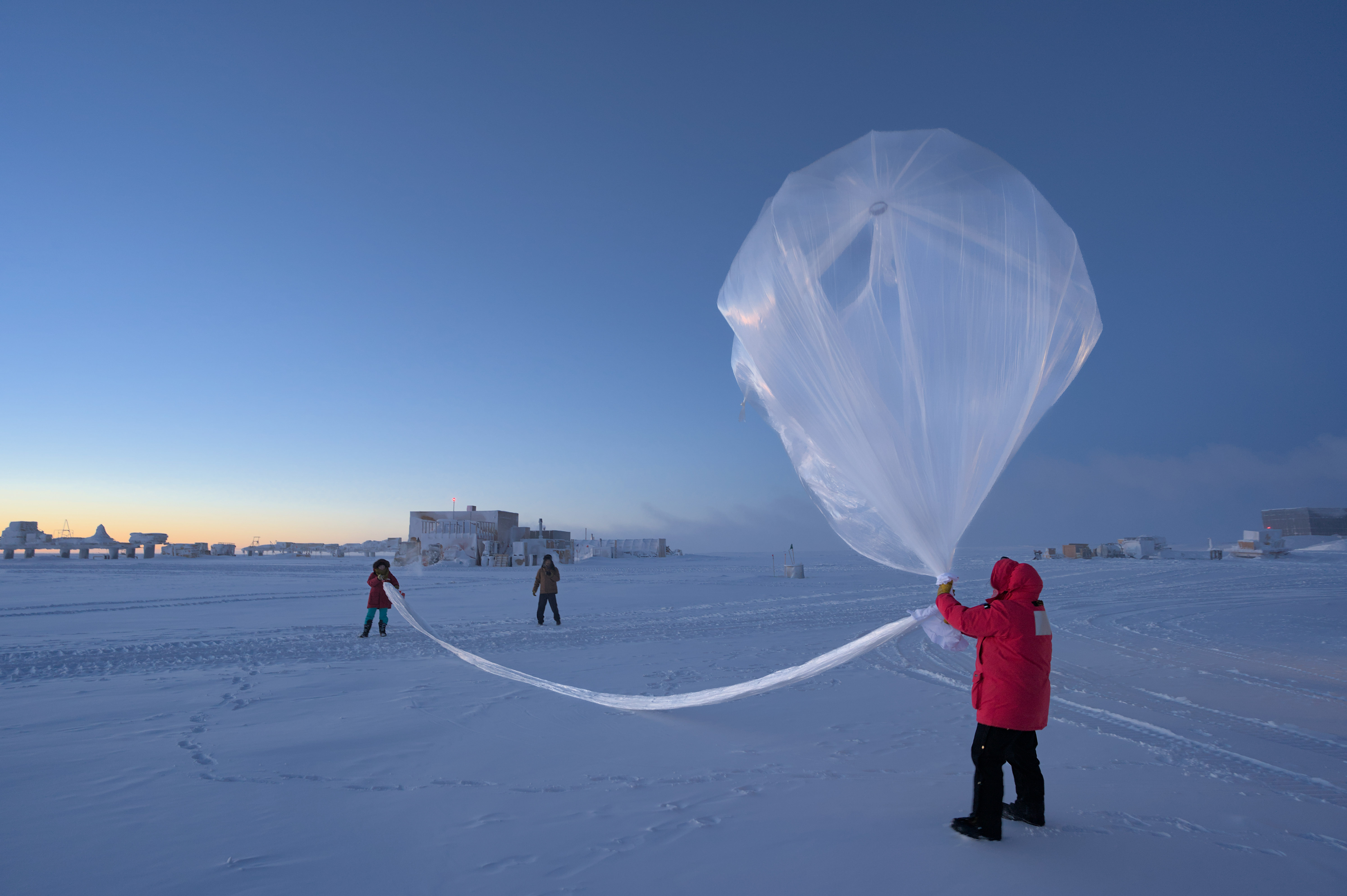
By Bryan Johnson, NOAA Global Monitoring Laboratory scientist
During September, NOAA’s South Pole balloon-borne ozonesondes showed a typical, rapid decline in ozone. Total column ozone dropped to 127 Dobson Units on September 27, a 53 percent loss compared to the August 10 profile measuring 272 Dobson Units.
The annual ozone hole begins when the rising sun over Antarctica initiates the destruction of ozone via photolysis, or activation of chlorine compounds. The best way for us to track this ozone decrease over the South Pole is by plotting the ozonesonde column ozone measured within the 14-to-21-kilometer altitude layer.

We are now entering the critical minimum period, from September 29 to October 12, when the lowest ozone column values are measured. The lowest total column ozone ever measured at the South Pole was 92 Dobson Units on October 9, 2006. While it is unlikely that the total column ozone will drop that low again, it’s possible that it will drop down close to 100 Dobson units if the polar vortex remains cold and stable.
In addition, the water vapor plume from the Hunga Tonga volcanic eruption on January 15, 2022 was predicted to increase wintertime polar stratospheric clouds (PSC) this year over Antarctica. PSCs provide the icy surface area needed to efficiently convert stable chlorine into unstable forms ready to photolyze and destroy ozone after the sun rises in September.
Here’s a little more about the effect of the Hunga Tonga eruption:
The underwater volcanic blast of Hunga Tonga Ha’apai on January 15, 2022, is the largest explosive eruption of the 21st century so far and the largest since the 1991 eruption of Mt. Pinatubo in the Philippines.
The Hunga Tonga eruption sent a dramatic plume of ash and water vapor 25 miles into the atmosphere and generated nearly 50-foot tsunami waves that hit parts of Tonga’s main island and sent swells across the Pacific. Still, the amount of ash was relatively small compared to other cataclysmic volcanic eruptions in previous centuries.
Sulfur dioxide from volcanic eruptions is quite rapidly oxidized to sulfate (H2SO4/H2O) aerosol.
This aerosol acts as an additional surface area for processing chlorine into species that are easily photolyzed upon sunrise and then catalytically destroy ozone, similar to polar stratospheric clouds. According to available data, the Hunga Tonga eruption injected 0.4 million tons of SO2 into the atmosphere, about 2 percent the amount of the Mount Pinatubo eruption.
It may be another 40-50 years before stratospheric chlorine drops low enough that polar vortex conditions or volcanic plumes reaching the stratosphere won’t matter as much. In the meantime, we continue our ongoing monitoring with balloons, satellites, and ground instruments that are seeing signs that the ozone hole is healing. The recovery of the ozone layer can be directly attributed to the 1987 Montreal Protocol that gradually eliminated the production and consumption of ozone depleting substances to protect the earth’s ozone layer.

